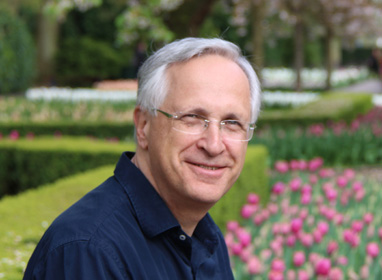Introducing New Staff 36
Self-introduction Alexander Adelaar

ADELAAR, K.Alexander
(Visiting professor, September 2014)
I am a linguist working on the description and historical developments of Austronesian languages. I am based at the University of Melbourne, where I am a principal fellow in the Asia Institute. My particular areas of interest in the Austronesian-speaking world are Borneo, Taiwan and Madagascar. My PhD thesis (1985, published 1992) was a reconstruction of Proto-Malayic, the hypothetical language ancestral to Malay and other languages and dialects that are closely related to Malay. I have been involved in the description, social history and classification of Malay varieties in general, writing on Sri Lanka Malay, Cocos Keeling Malay, Malayic varieties (Salako, Belangin) in Borneo, and a typology of vehicular Malay varieties (such as Bazaar Malay and East Indonesian Malay). I made an extensive linguistic description of Salako (2005), which is a dialect of Kendayan, a language related to Malay in West Borneo). I have contributed to the discussion involving the original homeland of Malay: although the cradle of Malay civilization is clearly in South Sumatra, it linguistic roots are more likely to be in West Borneo.
I also worked and published on several non-Malayic languages in Borneo, including Embaloh, Samihim and Maanyan.
In 2011 I published a descriptive study of Siraya, a language once spoken in Southwest Taiwan which is currently being revived by the Siraya people. It includes a grammar, texts and lexicon and is based on Siraya gospel texts , which were composed by Dutch missionaries in 17th century. Historically, the Formosan languages (that is, Austronesian languages in Taiwan) split off from Proto-Austronesian much earlier than Austronesian languages elsewhere. Therefore, the fascination to work on Formosan languages such as Siraya is that they provide some vital clues to the early history of the Austronesian-speaking world. It is also fascinating to see how a few descendants of the erstwhile Siraya community have been able to challenge Time and the forces of globalization through their remarkably successful efforts to bring the language back to life.
Here at Tokyo University of Foreign Studies I am concentrating on the linguistic history of Madagascar, a topic I have been concerned with for many years. The language spoken in that country is Malagasy, which has many dialects and is closely related to the Southeast-Barito languages in South Borneo (Indonesia). I am currently working on a phonological reconstruction from the present-day Malagasy dialects upwards to Proto-Malagasy (the hypothetical ancestral language from which these dialects must have derived), and furthermore from Proto-Malagasy to Proto-Southeast-Barito, and from Proto-Southeast-Barito to Proto-Austronesian. By making this step-by-step reconstruction I hope to give a solid foundation to the theory that the Malagasy language hails from Borneo. I also hope to provide a tool to assess possible loanwords in Malagasy, including the time when they were adopted and the pathway they must have followed.
My main publications include Siraya. Retrieving the phonology, grammar and lexicon of a dormant Formosan language. Berlin: De Gruyter Mouton (2011); Salako or Badameà. Sketch grammar, texts and lexicon of a Kanayatn language (West Kalimantan). Wiesbaden: Harrassowitz (2005); Proto-Malayic: the reconstruction of its phonology and parts of its morphology and lexicon. Pacific Linguistics C-119, Canberra: Research School of Pacific Studies, Dept. of Linguistics, A.N.U. (1992, a revised edition of my 1985 thesis); (co-edited with Nikolaus P. Himmelmann:) The Austronesian languages of South East Asia and Madagascar. London: Routledge. (2nd edition; 1st edition 2005); Asian roots of the Malagasy: a linguistic perspective, Bijdragen tot de Taal-, Land en Volkenkunde 151/3:325-56 (1995); Malay influence on Malagasy: historical and linguistic inferences, Oceanic Linguistics 28/1:1-46 (1989); Towards an integrated theory about the Indonesian migrations to Madagascar, in (P. N. Peregrine, I. Peiros and M. Feldman eds): Ancient human migrations: a multidisciplinary approach. 149-172. Salt Lake City: University of Utah Press (2009); Malagasy phonology history and Bantu influence, Oceanic Linguistics 51/1:124-160 (2012); Malagasy dialect divisions: genetic versus emblematic criteria. Oceanic Linguistics 52/2:457-480 (2013).
Copyright © 2010 Research Institute for Languages and Cultures of Asia and Africa. All Rights Reserved.
